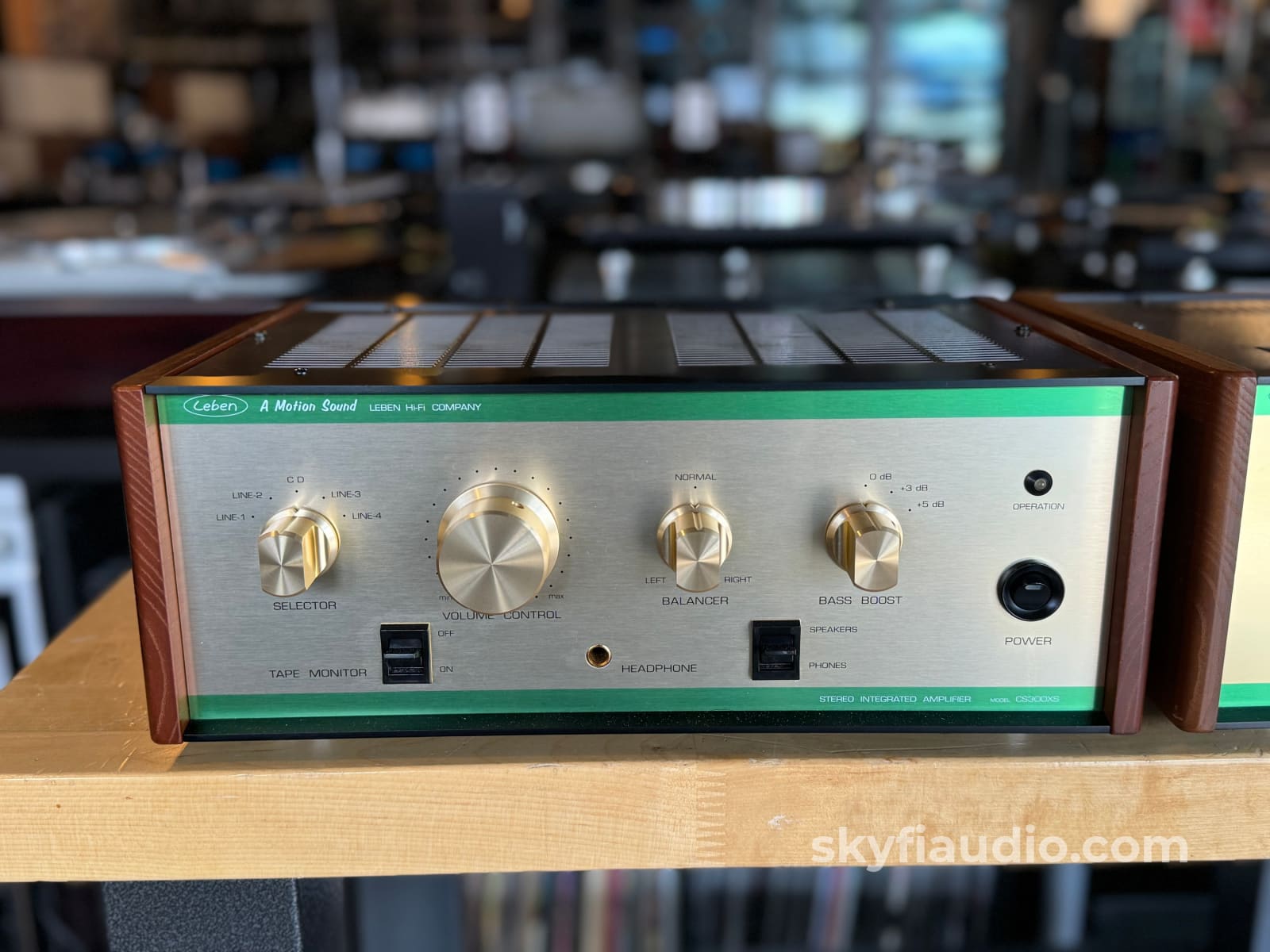
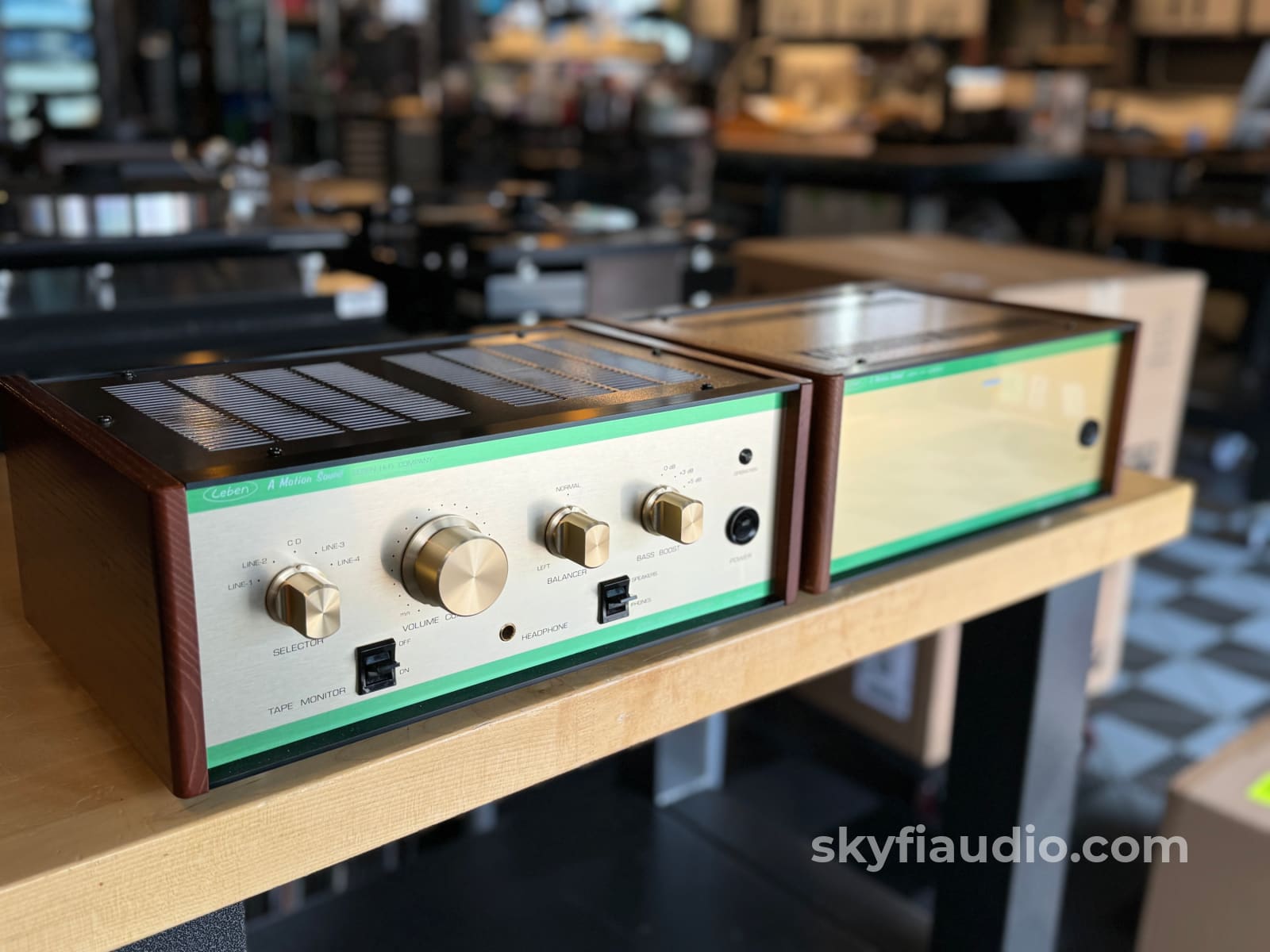
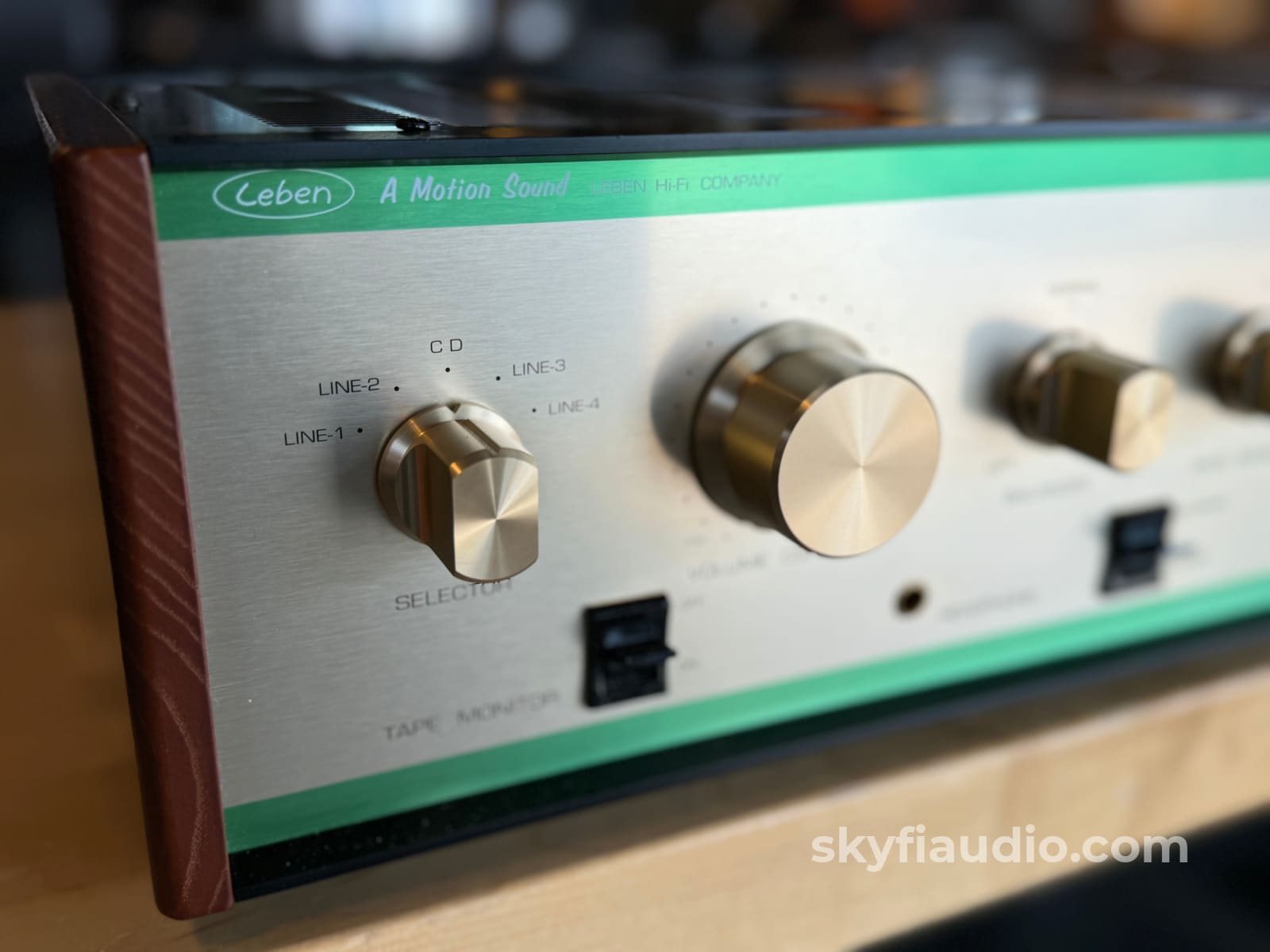
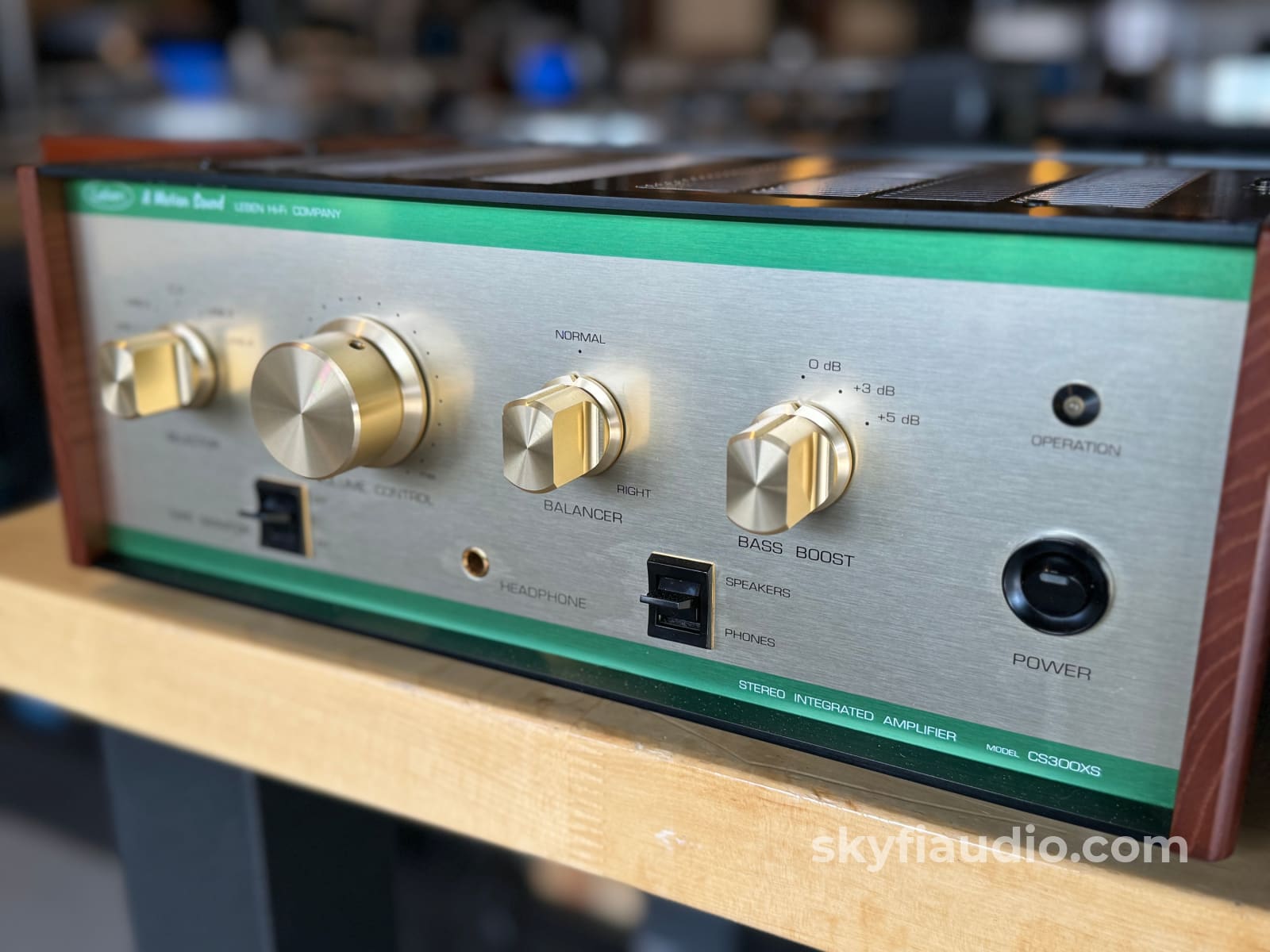

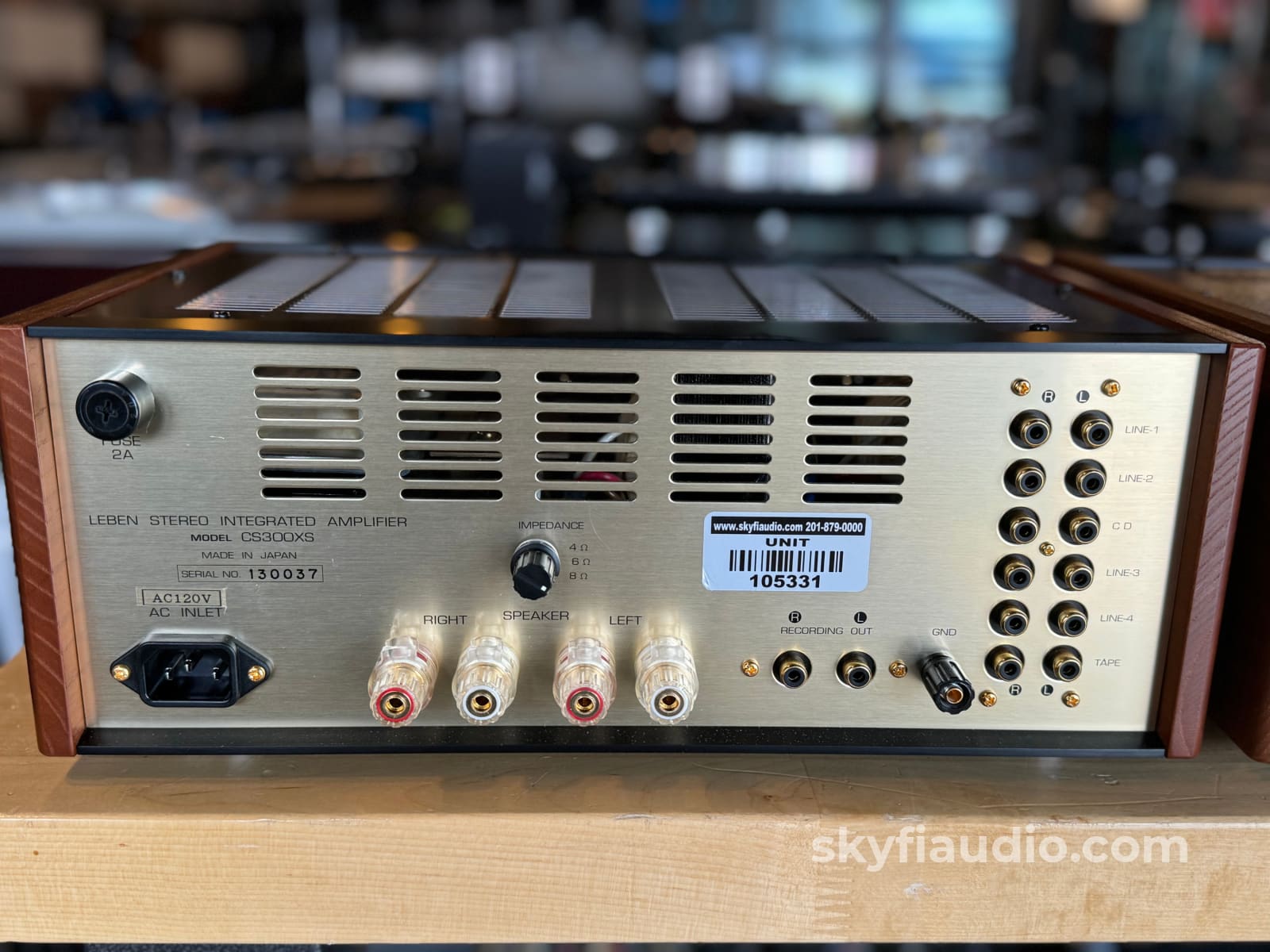
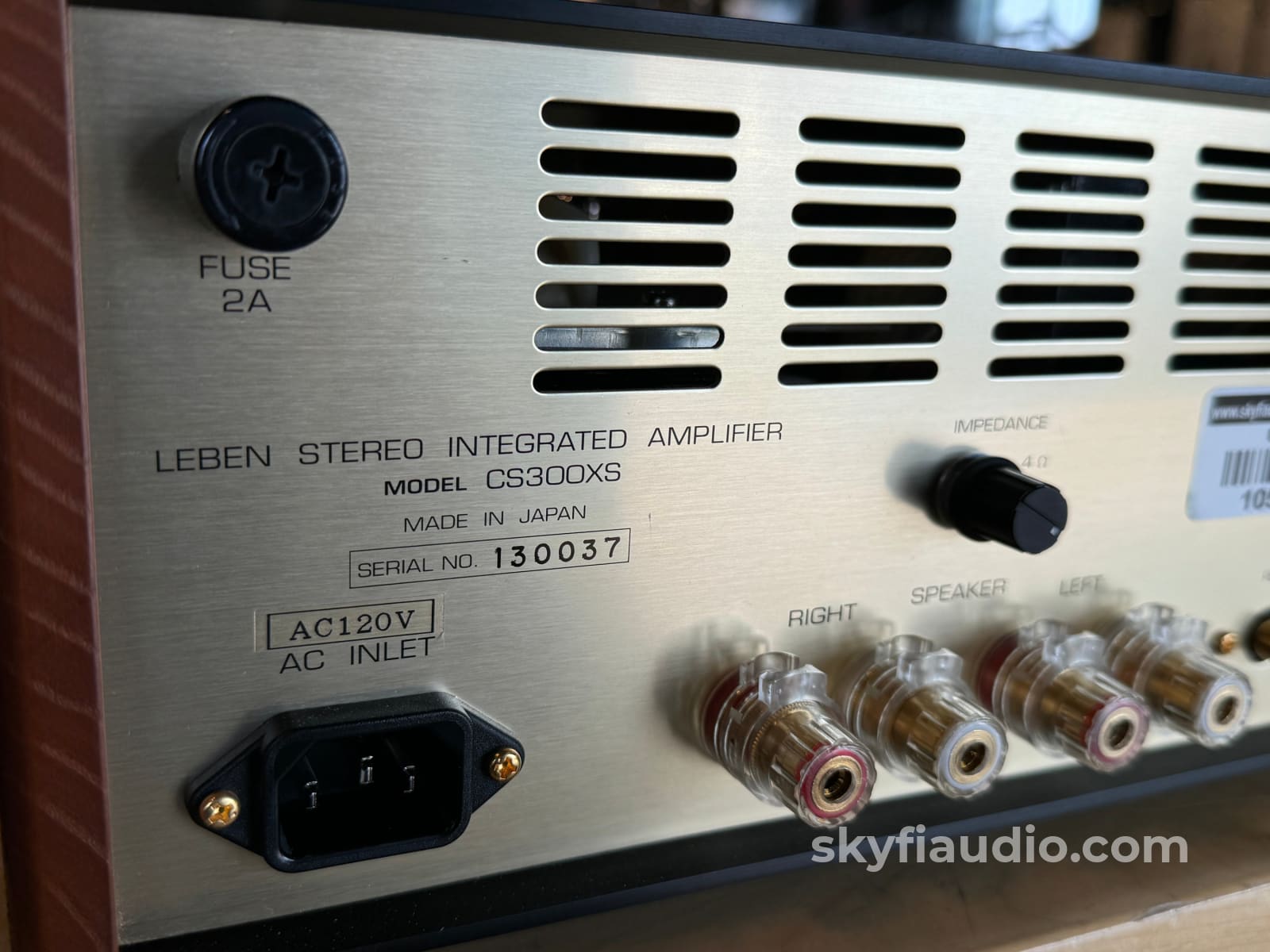
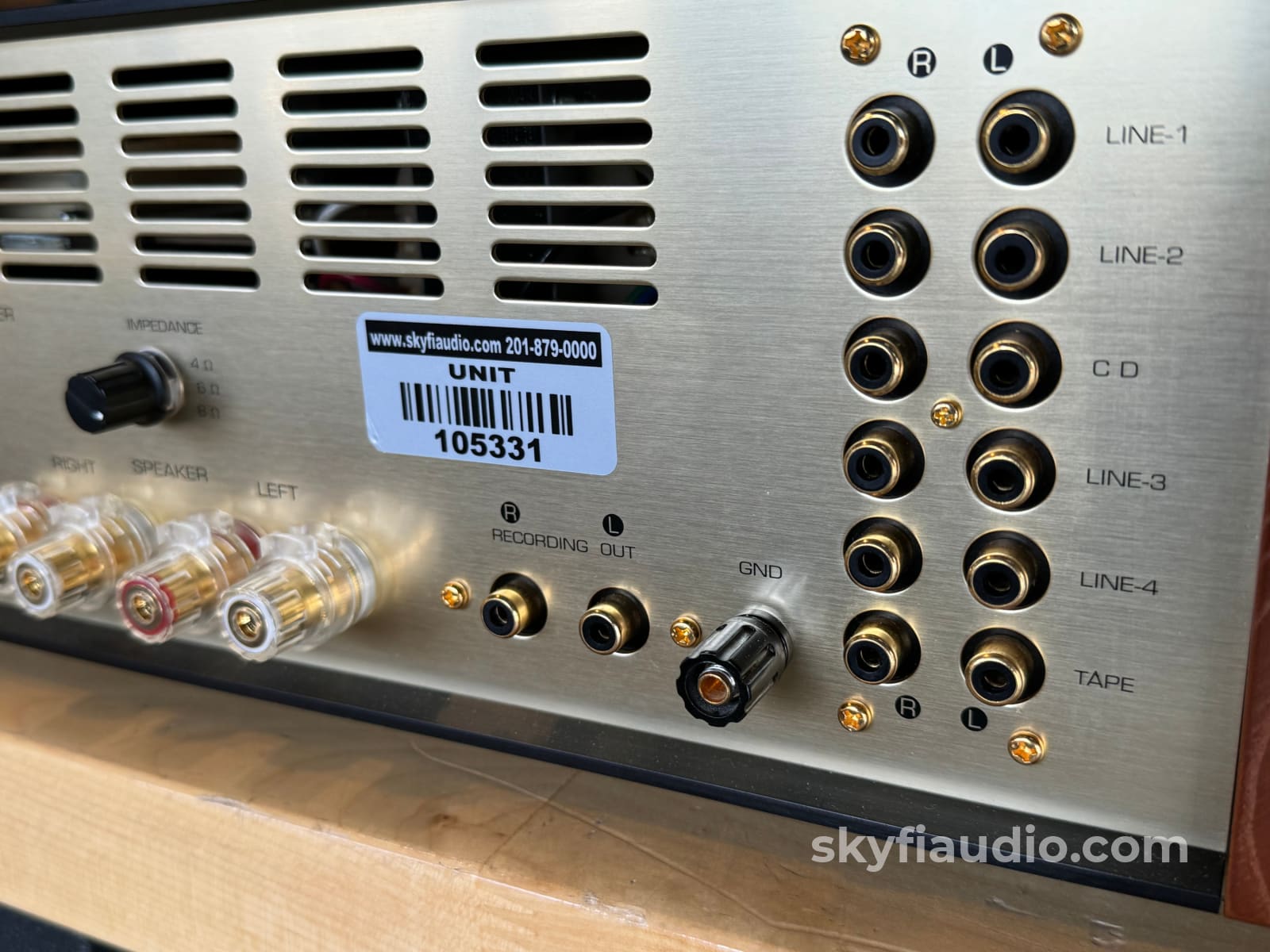
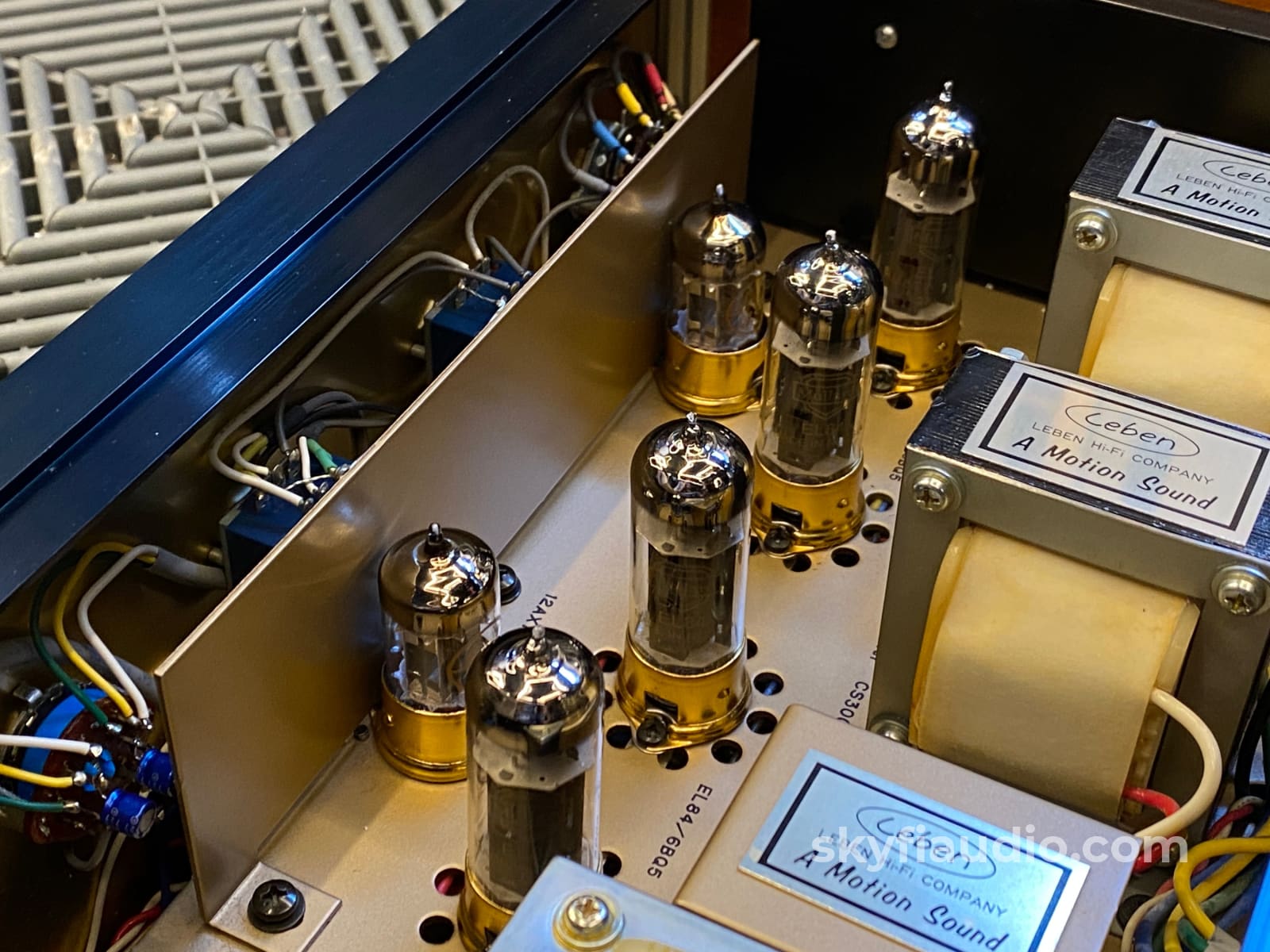
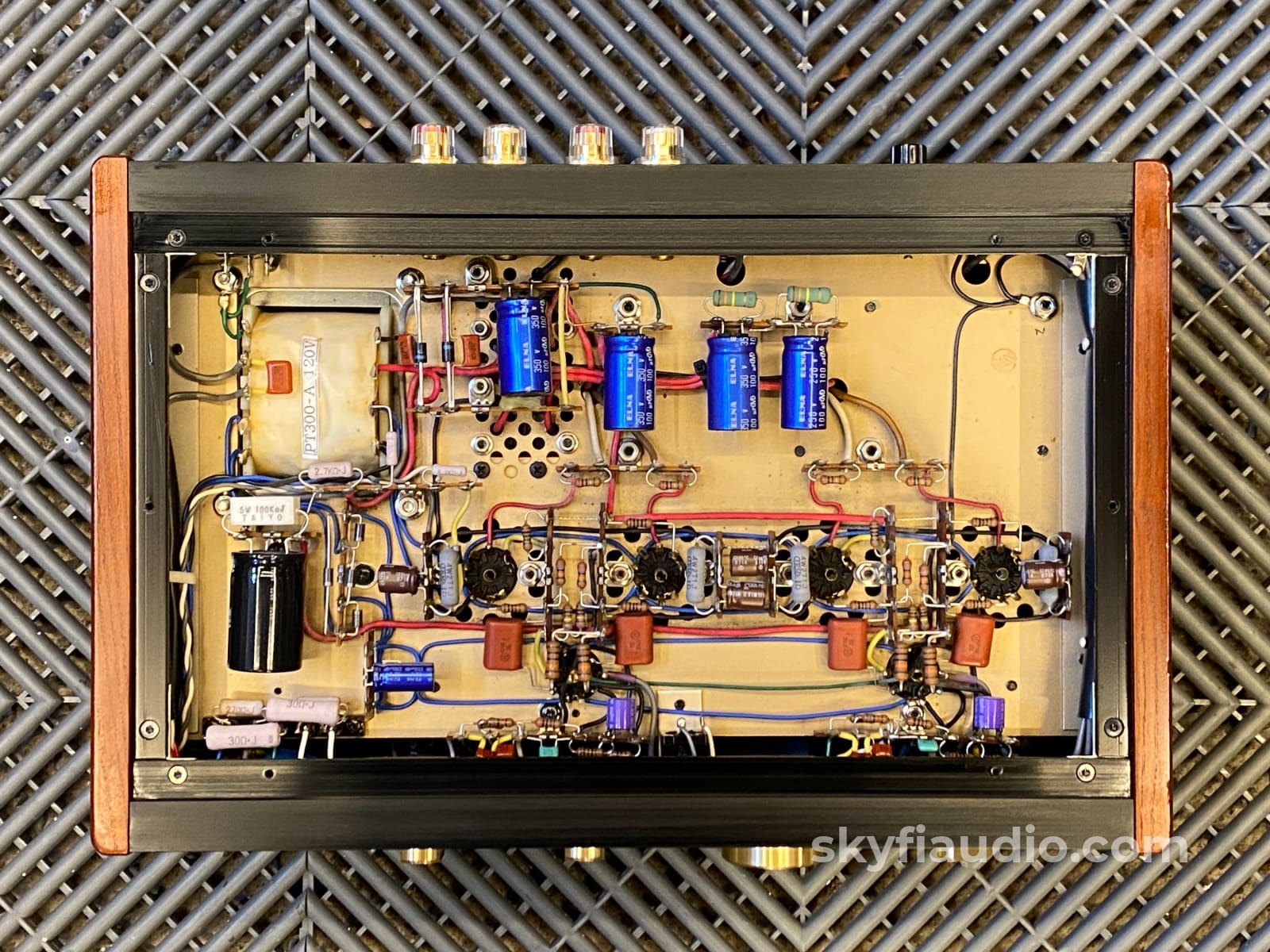
Leben Integrated Amp CS-300X(S) - Serviced
Free Shipping on Most Electronics - Excludes Speakers and Items Requiring Freight - Contiguous U.S. Only
Pickup currently unavailable at SkyFi 479

Leben Integrated Amp CS-300X(S) - Serviced
SkyFi 479
479 South Broad Street
Glen Rock NJ 07452
United States
General:
Gorgeous integrated from Leben balancing great tube sound, modern reliable construction, along with vintage looks.
The CS-300X(S) integrated amp is fitted with Mullard re-issue EL84 tubes which all test strong and sound great.
Tested to 10W which makes this a perfect match for high efficiency or vintage speakers. Klipsch comes to mind from our store as an excellent fit.
SkyFi Technical Notes:
CS-300X(S): The preamp section is fitted with a pair of JJ ECC803S gold pin 12AX7 tubes. The output (amplifier) tubes are current production Mullard reissue EL84.
More from Leben on the CS-300X(S):
LUXURIOUS PARTS
Tube Shield-Base:
24K gold plated
SIDE-WOOD PANEL:
Canadian White-Ash
HIGHEST-END AUDIO GRADE COMPONENTS:
RESISTORS:
Precision Industrial Grade +/- 1%
FIRST-STAGE BY-PASS CONDENSER:
An ultimate audio condenser "OS Condenser" developed by "SANYO"
LAST-STAGE BY-PASS CONDENSER:
"Fine-Gold" by "NICHICON"
JOINT CONDENSER:
"Metalized Polypropylene Condenser" with "Mesh-Shielding".
NF OVERSHOOT PREVENTION CONDENSER:
Ceramic Condenser.
CATHODE RESISTOR:
4W type. (Instead of 3W type)
OUTPUT TRANSFORMER: Newly developed Transformer with wider range for high frequency.
WBT type binding post.
CS-300X(S) SPECIFICATIONS:
TUBES EQUIPPED
EL84 X 4
12AX7A X 2
OUTPUT POWER
15 W X 2
FREQUENCY RESPONSE
15 Hz - 100 KHz (-2 dB)
DISTORTION
0.7%(10 W)
INPUT SENSITIVITY
600mV
INPUT IMPEDANCE
100K Ohms
OUTPUT IMPEDANCE
4/6/8 Ohms (Selectable)
POWER CONSUMPTION
82 W
WEIGHT
23.15 lbs (10.5 Kg)
DIMENSIONS
14.17" x 10.63" x 5.51" (360 (W) X 270 (D) X 140 (H) mm)
POWER
Detachable AC Power Cable x 1
Ownership:
Single Owner
Connections:
RCA inputs and outputs, 5 way speaker binding posts. Removable IEC power cord.
General Sound:
Smooth, uncolored, undistorted natural and clean
Cosmetic Condition:
8/10 = Very Good. Excellent front faceplate, one minor flaw on chassis side or top. See our detailed rating description here.
Working Condition:
Working perfectly and tested in our lab and listening room.
Included:
Just the unit and power cord.
Packing:
Original Manufacturers Packing
Recommended Cables:
Kimber Kable - RCA Interconnects - Better
Kimber Kable - RCA Interconnects - Best
Kimber Kable - Phono Interconnects
Kimber Kable - Speaker Cables - Better
Kimber Summit Series Monocle XL Speaker Cables (PAIR) - Best
Kimber Summit Series BiFocal XL Bi-Wire Speaker Cables (PAIR) - Best If Applicable
Kimber Kable - Power Cords - Better
Kimber Kable - Power Cords - Best
Testing Process:
We start with a visual inspection of all internal components to make sure that there are no signs of heat stress or damage. Capacitors are checked for telltale signs of predictive failure including bulging, shrunken wrappers, or physical leakage. We also inspect the PCBs for discoloration from resistors or transistors that may have been running hot. On vintage units we often spot check select capacitors for value and ESR.
If the device has the ability to decouple the preamplifier from the power amplifier, we remove the jumpers and independently test each section. If the device cannot be decoupled, we assess the electronic condition of the piece by analyzing the speaker level output only.
We start by connecting the "Pre-Out" jacks of the integrated to a Sencore PA81 Power Analyzer which simulates real world loading conditions and gives us an oscilloscope interface. The first order of business is checking that the volume control works smoothly throughout its entire range with acceptable channel balance. This is accomplished by feeding a 1 KHz sine wave into one of the preamp’s line level inputs while monitoring the preamp’s output on an oscilloscope.
We then switch to a 1 KHz square wave to test the tone controls, loudness function, and filters where applicable. During this step we are watching for equal alteration of the test signal by both channels. This also helps us identify dirty controls that will need treatment.
Once the basic line stage functions are verified, we test each input individually. This is especially important for devices that use relays to select their sources.
If the preamp section is equipped with a phono stage we test that as well. We use an inverse RIAA filter which allows us to feed a reference test signal into the phono input with the proper RIAA equalization and level. A square wave or sine sweep is used to verify that the device’s phono stage is faithfully reproducing the RIAA curve.
Next we test the power amplifier section by connecting the integrated amplifier speaker outputs to a Sencore PA81 Power Analyzer which acts as a dummy load, DC offset monitor, and oscilloscope interface. We start with a low level 1 KHz test signal at the "Main In” jacks and slowly increase its amplitude while monitoring the output on an oscilloscope for signs of noise, clipping, distortion, or improper channel balance. We continue increasing the signal level until the amplifier reaches clipping.
At this point we take an output power measurement and compare it to the spec sheet of the amplifier to verify proper performance. We finish off the bench evaluation with a 1 KHz square wave check and a 20 Hz to 20 KHz sine sweep to assess the amplifier’s frequency response characteristics.
This battery of tests will usually reveal if the amplifier has any issues that need further attention.
If the preamp and power amp both pass these tests, we reconnect the sections and verify that the preamp section can drive the power amp to rated power with a 1KHz tone on one of the line level inputs.
Before the device leaves the bench, we perform a listening test with actual music using a variety of preferred test tracks. Our benches are outfitted with familiar monitor speakers which help us identify inconsistencies that will not always show up on our test gear. The main things that we are listening for are hum or noise with no signal present, proper center image, clicks, pops, or any other obvious undesirable audio characteristics.
If the unit passes all of these tests it moves to our long term testing rig where we simulate real word operating conditions for 6-8 hours minimum. This allows us to monitor the unit for signs of thermal runaway or intermittent issues that only crop up when the unit has fully come up to temperature.
Choose options










